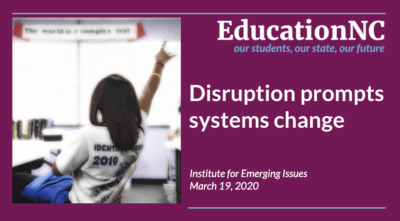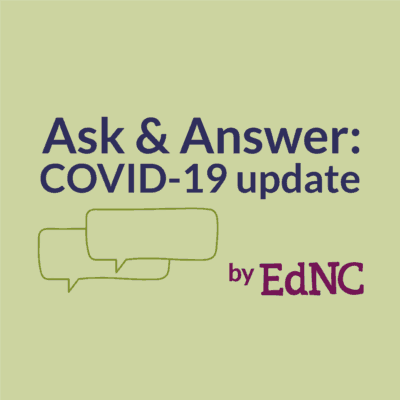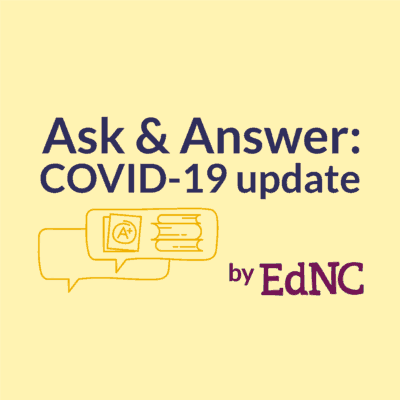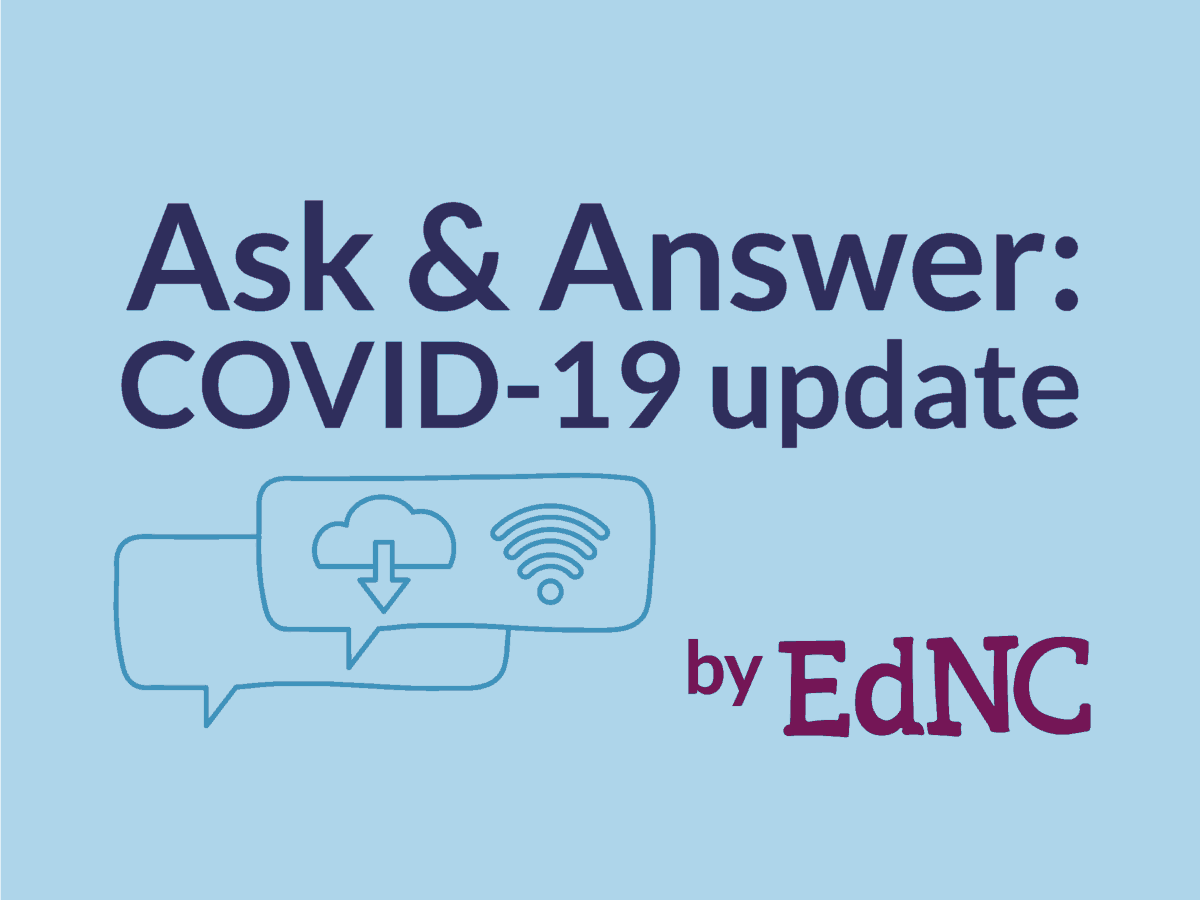

This week at EdNC.org, we are going to get started answering the lots of questions you are sending us about all the challenges — and opportunities — coming our way with more and more online learning from access to devices to access to the internet to the training needed for students, parents, and teachers. And more — we know there’s more.
Erin Swanson, the director of innovation for Edgecombe County Public Schools, is one of many educators wrestling with how to get students access quickly. “I know that getting broadband isn’t going to happen overnight, but I wish it would,” Swanson writes, asking “What can be done? Who should we be reaching out to?”
“It truly is the cruelest part of the digital divide,” said FCC Commissioner Jessica Rosenworcel back in 2017 in a keynote speech in North Carolina about the homework gap, a term she coined. Now, in this time of coronavirus when educational opportunity more broadly will be determined by access to a device and the internet and the capacity to use both well, Rosenworcel said in a recent op-ed in The Verge,
“the most important thing is to act now, so that no child is left offline.”
“No child left offline” is the new “no child left behind.”
These issues have been on our minds long before coronavirus.
On January 29, 2020, there was a hearing — entitled “Empowering and Connecting Communities through Digital Equity and Internet Adoption” — before the subcommittee on communications and technology of the committee on energy and commerce in the U.S. House of Representatives.
North Carolina’s own Jeff Sural, the director of our broadband infrastructure office, testified. “For all North Carolinians to realize broadband’s full benefits,” Sural said, “federal, state, and local leaders must design and implement concerted efforts to address the four primary barriers to adoption: lack of availability, cost, relevance, and digital literacy.”
Here is the recorded livestream of the hearing:
And then on February 10, 2020, Leslie Boney and his team at the Institute of Emerging Issues convened people across North Carolina — thanks to UNC-TV –– to talk about connecting all of our state to technological opportunity.
At that convening, I interviewed Joshua Edmonds, the director of digital inclusion for the City of Detroit. Edmonds had also testified before the U.S. House subcommittee back in January.
He said, “Right now we are in a ‘space race’ — cities, counties, states. We all are essentially competing with one another. We all want to be the first one to have alignment.”


“What’s alignment?” I asked him.
“Alignment,” Edmonds continues, “means the state government has identified digital equity as a priority, the counties are on board, and the local municipalities are on board, too. And that alignment doesn’t exist yet anywhere. So if there were to be one state that was to get it right that means they would then create the model for the rest of the nation to follow.”
Edmonds said North Carolina could be that state.
Here some things to know…
Take a look at the quotes in this image. Policymakers on both sides of the aisle — from Sens. Thom Tillis and Richard Burr to Gov. Roy Cooper to Speaker of the House Tim Moore — understand the importance of this issue.
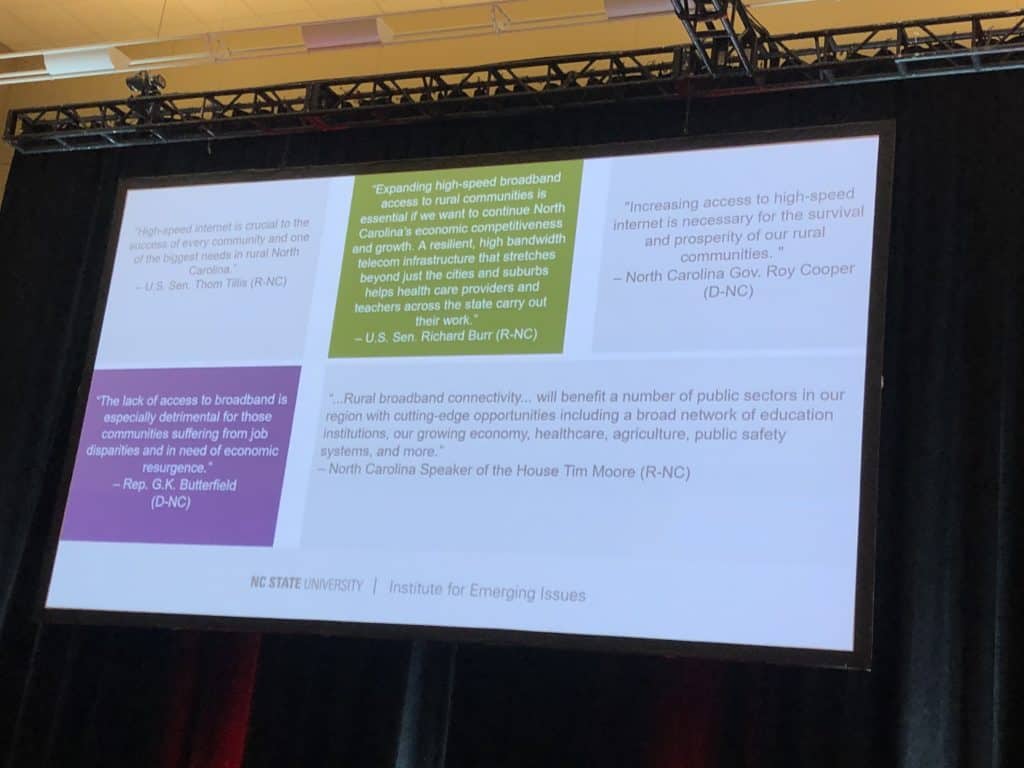

North Carolina has a Department of Information Technology. Check it out here.
On this website, ncbroadband.gov, you can learn more about broadband availability, broadband adoption, and a playbook for expanding broadband access in your community.
This report from digital teaching and learning in the N.C. Department of Public Instruction provides “estimates on lack of access to the internet and school devices.”
This report from DIT and the Friday Institute of Educational Innovation on the homework gap is instructive now in the conversations happening about how to move faster on this issue so more students can access e-learning opportunities.
If you want to take a deep dive on this issue, I encourage you to take some time and virtually work your way through all of these videos from IEI’s Reconnect:
- Welcome and Opening
- Broadband Story Slam
- Data Behind the Stories
- The Future of Technology
- New Visioning
- Digital Inclusion
- Community Innovators: Part 1 | Part 2
- Secretary Boyette’s Address
And here are the presentation slide decks from IEI:
- Roberto Gallardo, Ph.D. | Assistant Director, Purdue Center for Regional Development
- Larry Irving, President and CEO, The Irving Group
- Zachary Mannheimer, Principal Community Placemaker, Alchemy Community Transformations
- Angela Siefer | Executive Director, National Digital Inclusion Alliance
Challenges like this one aren’t new to our state. Back in 1935, in an effort to provide electricity to every nook and cranny, to every small business and every farm, we created the North Carolina Rural Electrification Authority, which many remember as “REA.”
Now is the time to ask and answer this question, North Carolina.
“Digital equity is a commitment for the least of us,” said Edmonds. “It requires an honest assessment of what diverse populations need to achieve meaningful participation in a digital society.”


